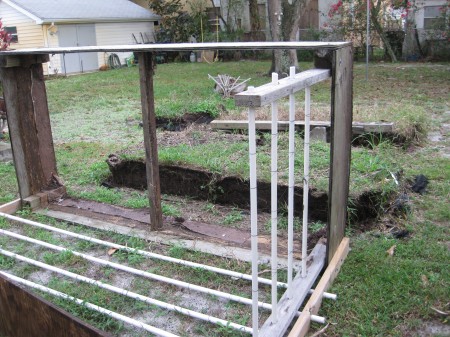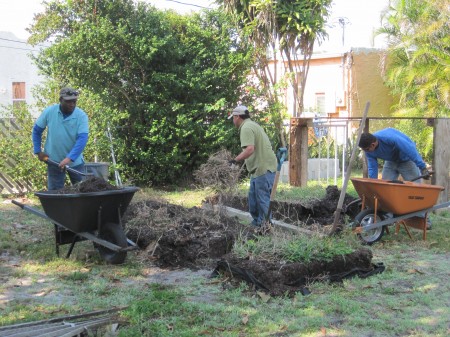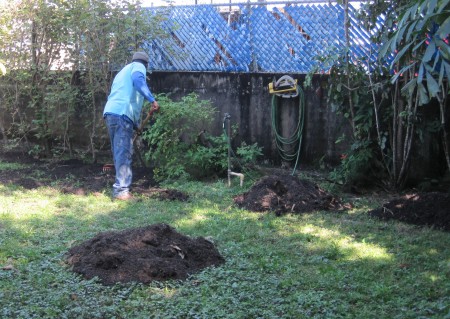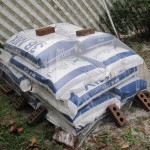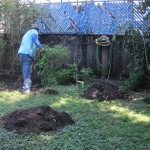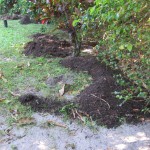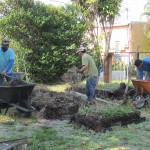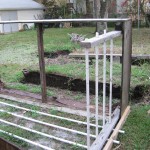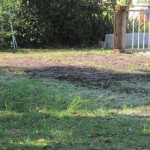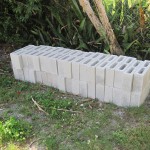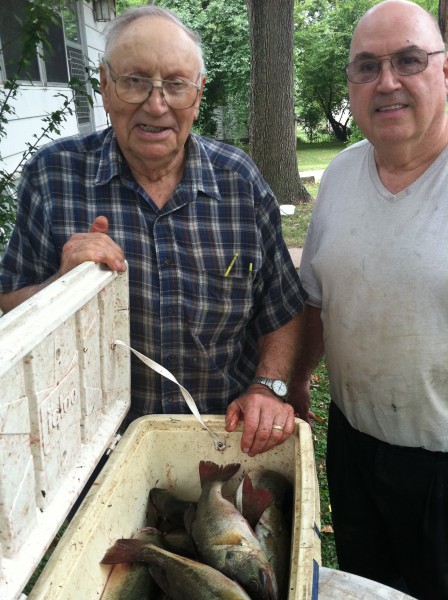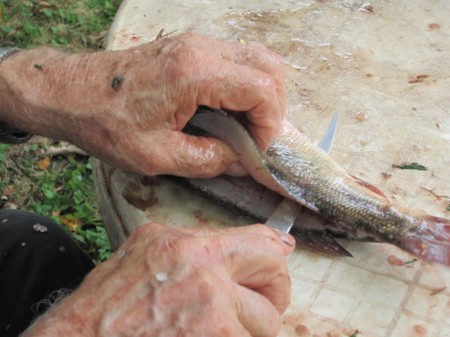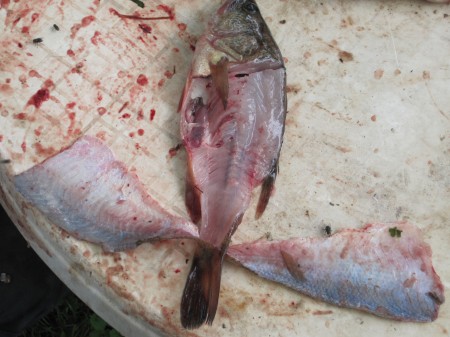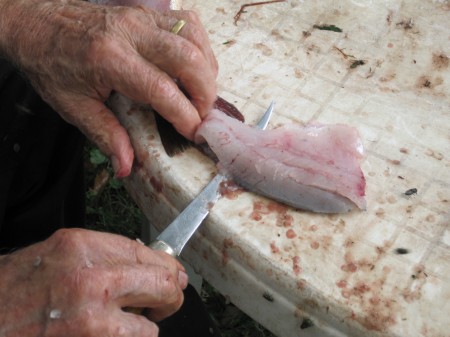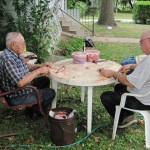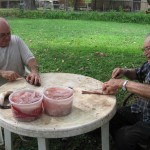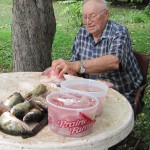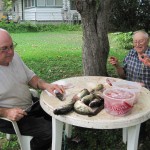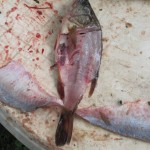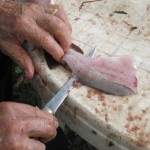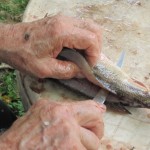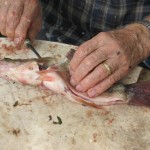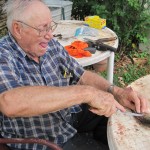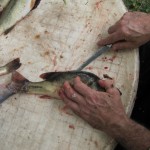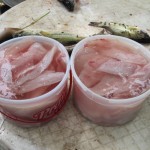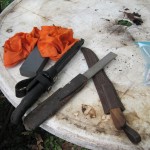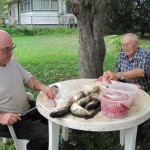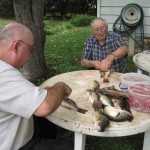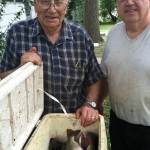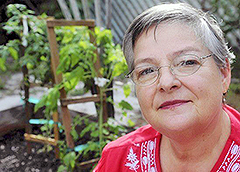2011-2012 Garden Plague
If you remember last season, my garden suffered from all sorts of pestilence. The most destructive was a fungus called Phytophthora Root Rot. It is a soil-borne, anaerobic fungus that is unrelenting and terminal. There is no treatment available to home gardeners.
Phytophthora is naturally occurring in the soil. The weather conditions in south Florida during the winter months of 2011 and early 2012… the continual hard rains, during what is usually our dry season, combined with warmer than usual temperatures… caused this fungus to flourish. Eventually, it killed everything in my garden except one exceptionally determined jalapeno plant… which, surprisingly, is still blooming and producing a year after it was planted.
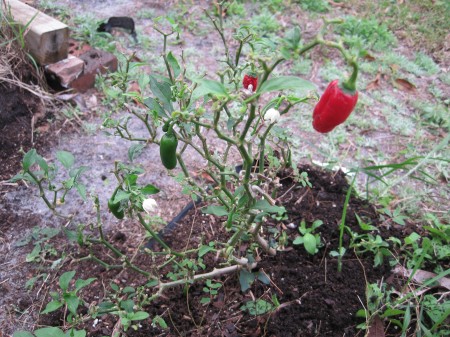 Jalapeno
Jalapeno
The only way to rid my garden of the Phytophthor fungus is to empty the boxes, cart away the contaminated soil, disinfect the boxes and start again. This is a huge undertaking, and before doing so, I wanted to know a whole lot more about gardening in south Florida than I did.
Have to Know More than I Did
One Saturday this month, the Palm Beach County Cooperative Extensive Service with the University of Florida Institute of Food and Agriculture Sciences gave a seminar about backyard gardening in south Florida. I attended hoping to learn more about successfully growing vegetables in south Florida… and most important to me, how to prevent fungus and control the other pests that want to eat my veggies more than I do.
Learned Helpful Stuff
I found out… and was somewhat relieved to know… that the Phytophthor fungus was not something I did. It was explained that the substantial amount of rainfall during the dry season contributed to the increased fungus growth.
Other topics of the seminar were related to pest control and fertilizing the soil. Instructions were given about maintaining the PH of the soil in the garden. There were demonstrations on ways to start seedlings and when to begin the process for the growing season. There was much more, and I will be using and passing on the information as I start over with my raised garden this month.
Tour of Their Garden
At the end of the seminar, all attendees were invited to tour the Extension Service garden.
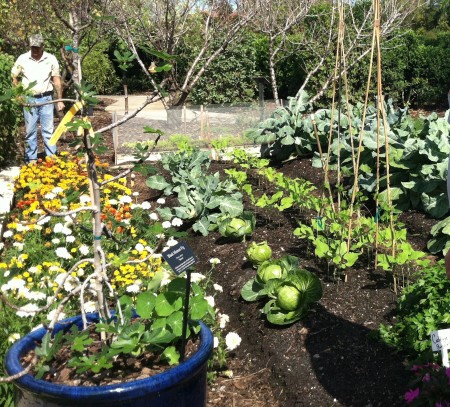 Extension Service Garden
Extension Service Garden
I did not see a single unhealthy plant in the place, and the variety of what was being grown was extensive. I hope I can remember all of the information and tips shared during the 4-hour seminar. I want to have veggies that look this good in a couple of months.
Grandma Was Right
You will notice in the picture above, there are marigolds along the edge of the extension service garden. One piece of information acquired at the seminar was very familiar to me. They plant marigolds in their vegetable garden as pest control.
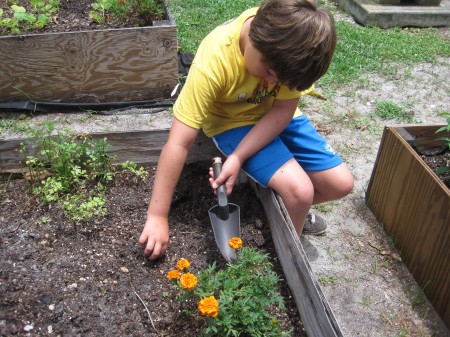 Grandson Weeding
Grandson Weeding
My grandmother, Christina Hoffman, from whom I learned to love the garden, always had marigolds planted around her garden for the same reason. I plant marigolds around the edges of all the boxes in my garden.
They were not strong enough to ward off all the pests last season, but I will continue plant them in every garden. If nothing else, they are beautiful and none of the pestilence that befell my garden harmed a single petal or leaf of my marigolds.
Tags: jalapeno plant · marigolds · Palm Beach County Cooperative Extensive Service · Phytophthora Root Rot · University of Florida Institute of Food and Agriculture Sciences
